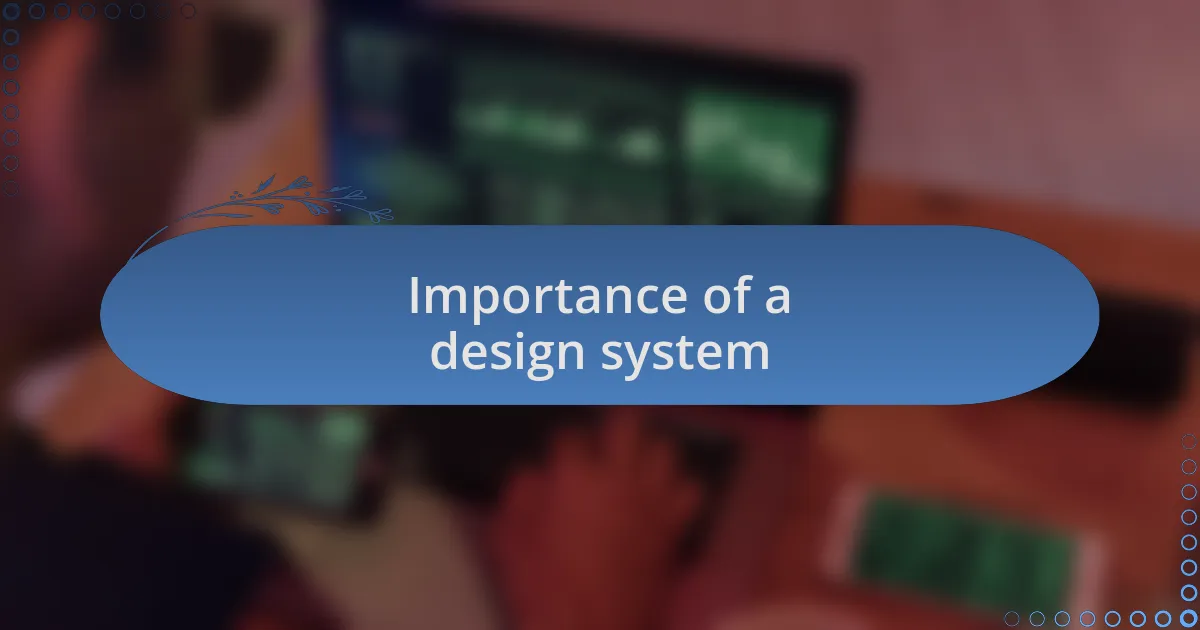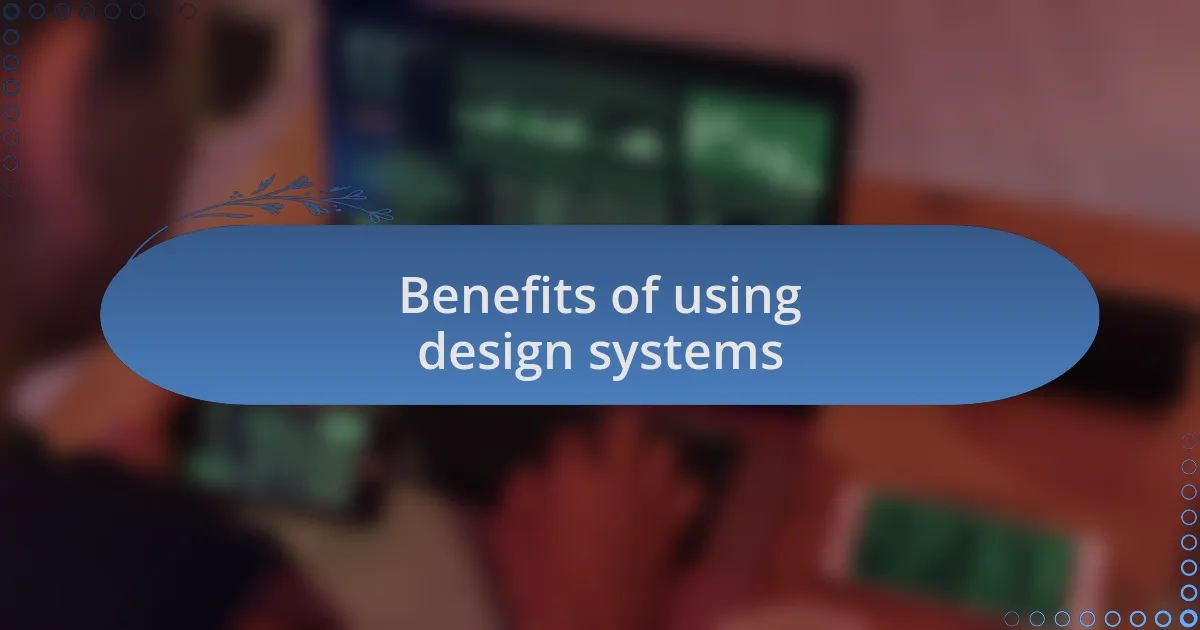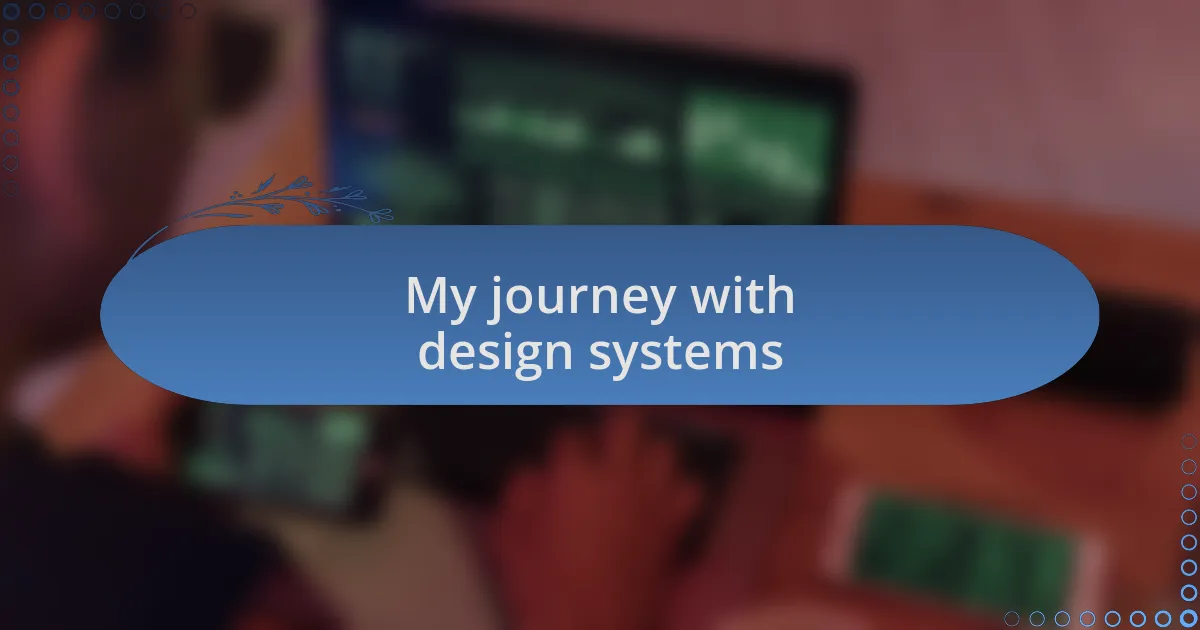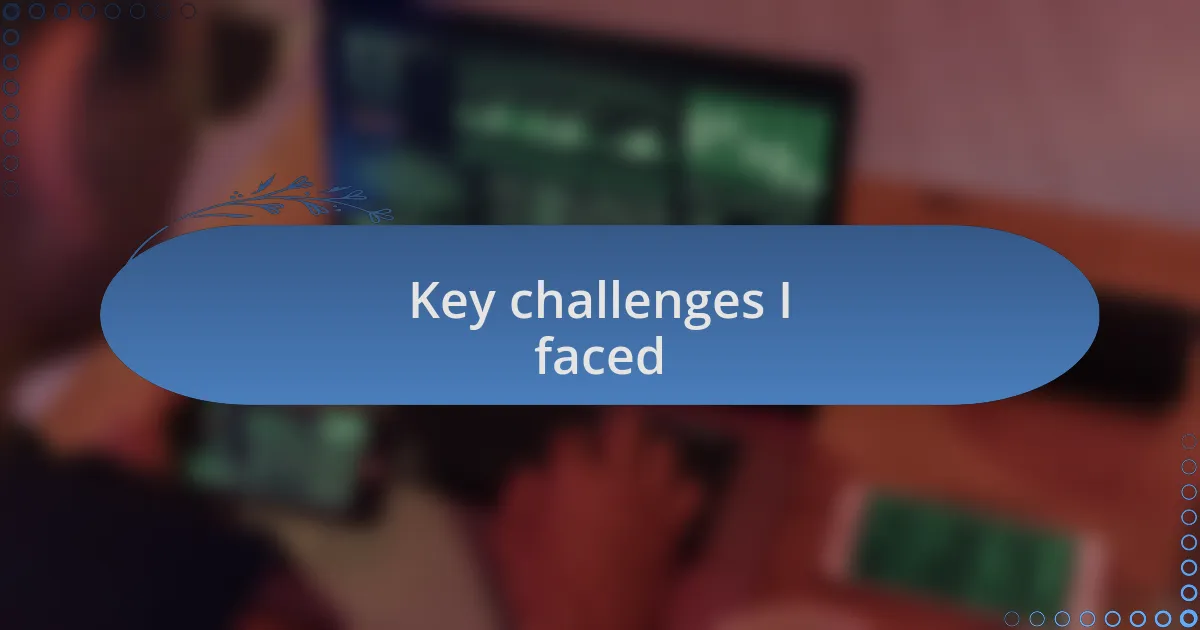Key takeaways:
- A design system enhances product cohesion and team collaboration, leading to a more productive and creative environment.
- Utilizing design systems saves development time, improves user experience through consistency, and fosters innovation by allowing teams to focus on creative solutions.
- Challenges in implementing design systems include team resistance to change and maintaining consistency while adapting to design trends.
- Effective integration and training are crucial for successful adoption of a design system within existing workflows.

Importance of a design system
A design system serves as the backbone of a cohesive product, ensuring that every element is both functional and visually aligned. I remember working on a project where the absence of a design system led to inconsistencies that baffled users, causing them to feel lost. Have you ever visited a site that felt disjointed? Frustrating, right? That’s what happens without a clear design language.
When I implemented a design system in my workflow, I witnessed a remarkable transformation in collaboration among team members. It was as if a unified language emerged, making discussions about design choices more productive and focused. Everyone was on the same page, and this alignment not only boosted morale but also accelerated our development process. Doesn’t that sound like the kind of environment where creativity thrives?
Lastly, a robust design system instills confidence in your team’s ability to scale products efficiently. During one project, I realized that with reusable components at our disposal, we could test and iterate faster than I ever imagined. This approach not only enhanced our overall output but also allowed for timely updates based on user feedback. Have you ever felt the exhilaration of seeing your ideas materialize seamlessly? That’s what a design system can do for you.

Benefits of using design systems
One of the standout benefits of using design systems is the time saved during the development process. I remember a project where, instead of recreating common UI elements from scratch, we could pull from a library of components. It felt revolutionary—what used to take days of back-and-forth communication now turned into quick decisions. Don’t you love it when things flow smoothly like that?
Moreover, utilizing a design system leads to improved user experiences. There’s a sense of familiarity and ease when users encounter consistent design patterns across a website. For instance, I’ve seen users return to a platform simply because they felt comfortable navigating it. How powerful is it to create a space where individuals enjoy exploring?
Lastly, one of the most rewarding aspects I’ve found in design systems is their ability to foster innovation. With the boring stuff standardized, I found more energy to brainstorm and experiment with creative solutions. One time, this freedom allowed our team to introduce a unique feature that received rave reviews. Isn’t it refreshing to unlock creativity rather than be bogged down by repetitive tasks?

My journey with design systems
My journey with design systems began quite unexpectedly. I was working on a project where the client had a vision but no clear guidelines. I suggested we implement a design system, and the transformation was immediate. It felt liberating to see everyone on the team speak the same visual language. Have you ever experienced a moment when everything just clicked? That was it for us.
As I delved deeper into the design system approach, I discovered its impact on team collaboration. I recall late nights spent refining our component library, which ultimately became our go-to resource. There was something magical about knowing that we could streamline our workflow and elevate our designs without starting from scratch every time. It’s like having a toolkit that empowers creativity—don’t you think that’s what every creative project needs?
Over time, I witnessed how a robust design system can elevate an entire brand. I remember how our consistent design choices reinforced the brand identity and made it memorable. Seeing users respond positively and engage with the product gave me a sense of fulfillment that’s hard to describe. It’s rewarding to know that the choices we made, grounded in a solid design system, contributed to creating a meaningful experience for users. Have you ever felt that deep sense of connection between your work and its impact on others?

Key challenges I faced
One of the primary challenges I faced was getting the team on board with the design system philosophy. Initially, some members were resistant to change, feeling that adhering to a new framework might stifle their creativity. I remember hosting a few brainstorming sessions where we discussed our fears and misconceptions. It was eye-opening to see how through open dialogue, we could address their concerns and highlight how a design system could actually enhance, rather than restrict, our creative processes.
Another significant hurdle was maintaining consistency across multiple projects while adapting to evolving design trends. I found myself constantly revisiting our design guidelines to ensure they remained relevant without compromising the integrity of the system. I’ll never forget the weeks I spent updating our component library while fielding requests for minor adjustments. It felt overwhelming at times, but with each iteration, I learned more about balancing innovation with adherence to a cohesive design language.
Lastly, integrating the design system into the existing workflow presented its own set of complications. I recall a project schedule being thrown off because not everyone utilized the shared resources effectively, leading to miscommunication. It taught me the importance of training and continuous education within the team. Have you ever encountered a situation where a new tool seemed more of a burden than a blessing? I certainly did, and that experience motivated me to develop comprehensive onboarding resources to ease the transition.